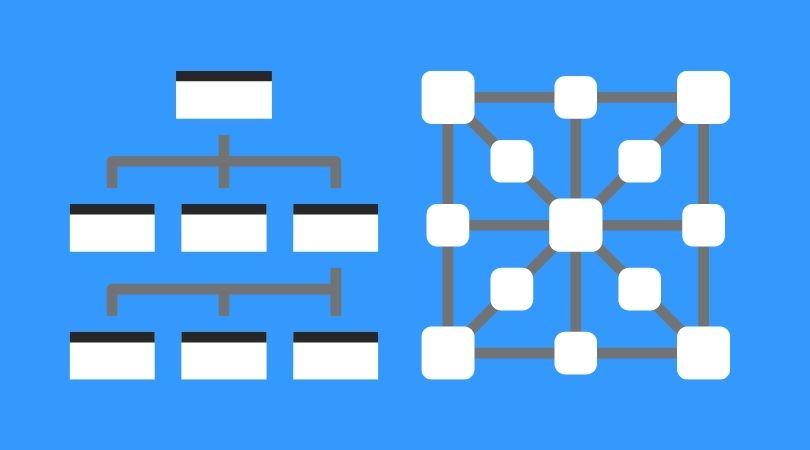
I laugh whenever I look back at my resume from freshman year.
I remember how much effort it took just to fill up that single page. I remember expounding on how much my experience as a summer camp counselor would make me a good intern at Google. I remember getting rejected from Google without even getting an interview.
The fact of the matter is, whether we like it or not the first impression we make is with our resume, and if we can’t clearly show from our experience that we have the potential to make a good employee, a recruiter will reject us sight unseen. That’s life.
But what do you do if you’re a freshman, took last summer to travel the world, or are switching from a different career where you can’t demonstrate your technical expertise? You need to build up your resume to ensure you make it past the initial cut and have a chance to prove what you’re truly capable of.
On the bright side, there are lots of options available for you to beef up your resume. You could get an internship or be a research assistant. You could get a degree in computer science or attend a coding bootcamp. You could solve problems on HackerRank or Topcoder. Unfortunately none of these options are ideal. They either take a long time to put into action or don’t really show your ability to write real-world software.
But, don’t despair. There is one last option that avoids all of these problems and will do wonders to boost your resume. Not only can you demonstrate initiative and technical skills but you can also showcase your ability to learn new technologies — and potentially build something cool in the process.
I’m talking about side projects.
Why side projects?
There are lots of things that are awesome about side projects. On one hand, you’re demonstrating your skills at software development, and on the other, it shows employers many of the qualities that they’re looking for but are hard to see in an interview.
There are five specific benefits that come from doing side projects:
- You can start right now. Most of the other things you can do to build your resume will take time. You have to find an internship or take a class. This could take months and then you actually have to show up and do well. With a side project you can start right now and have something done within the week. As you keep working on your project, you can update your resume and it just keeps getting better and better.
- Shows initiative. There is no better way to show that you’re self-motivated and will work hard without someone staring over your shoulder than by building something totally by yourself. Side projects show that you have the self discipline to get up every day and do what you need to do whether you want to or not.
Side projects show employers many of the qualities that they're looking for but are hard to see in an interview. Click To Tweet
- Hard evidence of your skill. If you can show someone software that you’ve built, there’s no way they will question your ability to build software. If you upload your actual code to Github then they can see specifically what to expect from you if you are working on their team. Just one more reason to write clean code.
- Learn a lot. When you start a job, you’re never going to come in knowing everything that you need to know. Therefore your ability to learn new skills is critical. By doing a side project not only does it give you the opportunity to learn new skills that could be helpful to you, but it shows your prospective employer that you are capable of learning new skills on your own and applying them to your work.
- Build something cool. This last benefit is mostly for you, but by doing a side project, you have something cool to show people. It is really amazing to be able to open up a phone or web browser and say to someone “hey look what I built.” This can also be an awesome tactic at a networking event if you’re trying to find a job.
There are many other benefits of doing side projects. You could build something that earns an income for you on the side or get recognition among your peers or others, but there is also one downside: it is a lot of work.
I know I never said this would be easy, but side projects aren’t something that you just crank out in an afternoon. We’ll come back to this in a moment, but a good side project is a serious project, and like with everything, you get out what you put in. That being said, there is no better way to build up your resume, so if you’re serious about getting your dream job, it is easy to justify putting in the work.
What makes a good side project?
It’s really easy for me to say that you should start working on a side project. “Start working on a side project.” There. I said it.
But not all side projects are created equal. When you’re choosing a project to start, there are four things that you should keep in mind:
- One large project. One of the biggest questions that always comes up when doing side projects is whether to do one large project or multiple small projects. I am strongly of the opinion that you should do one large project. Even though you’re only doing one thing, you can include many different technologies and by focusing on one project you can also get a lot deeper into the technologies you’re using, as well as having a more impressive end result. Large projects also show your ability to plan and follow through.
- Play to your strengths. While one point of this project is to learn new things, you don’t need to go out of your way to use technologies you’ve never used before. Side projects are a lot of work no matter what, and the learning makes them that much more challenging. The best approach is to use a combination of technologies that you’ve used before and those that you haven’t.
- Use multiple technologies. Although this has already been mentioned, it is worth reiterating. Building a bunch of stuff in Java is fine, but it doesn’t really show off your skills in the way that it could. As I mentioned, you want to learn some new technologies in the process. As part of your job at any software company, you will be using multiple technologies together to accomplish your task, so it is good to show that you know the right technology to use for the right thing.
- Something that interests you. If you have no interest in anything front-end, don’t build a UI-heavy project. This just isn’t necessary. You could build a command line tool or a website that only requires a simple UI. If, however, you really like UI stuff, maybe build a project where that is the focus. It is also best to build something that is relevant to you or that you might actually use, because then you are your own first customer.
In the end, these are just guidelines. The best side project is the one that you are going to see through to completion. If you know that you don’t have the patience for a big and involved project, do a smaller one. Aim for as many of the above as you can, but any side project you do is better than the awesome side project that you didn’t do.
I don’t know what to build
The last problem that you will probably run into is coming up with an idea for your project. Let me tell you something right now: This doesn’t need to be the next Facebook. Aren’t you relieved?
The fact is, your side project doesn’t even need to be original. You can literally build whatever you want, be that a brand new social network or a clone of Wikipedia. Here are four ideas for choosing a side project:
- Look for problems in your life. Most of us have ideas all the time and then promptly forget them. Create a note on your phone and write them down before you forget. If you are annoyed about something, think if you could make an app that would solve that problem. There are ideas all around us as long as you know what to look for.
- Improve on an existing product. Is there something that you use regularly that sucks? I know that I can think of a few things right off the top of my head. Maybe it’s the banking app that you use or maybe it’s the app for your fitness tracker. Whatever it is, if you think there’s a better version to be made, make it. You don’t have to build every feature that the original app has, but maybe you can fix a few key problems.
- Find a random idea. There are a lot of startup idea generators out there, such as this one. While most people consider these more a source of amusement than anything that anyone would find useful, these can actually be a goldmine of ideas because you start thinking about things in different ways than you were before. Maybe you get “uber for dogs” as a suggestion and that sparks an idea for an app that you can build to help your dog. I’ve seen iPad apps that are games for pets. You never know.
- Clone an existing app. If you’re not one for entrepreneurship/product management, this is a really good option for you because there is a lot less design work involved. Just pick a service that you really like, or any one that you think would be interesting, and build a clone of it. If you need some inspiration, here is a good Medium article where a guy built 12 apps in 12 weeks, many of which were clones.
When it comes to choosing a project, there are lots of different things that you can do and the most important thing is just to pick a project that interests you. Even if you build a notebook app that has been built 1000 times before, you will learn a ton and have something to show off, and that is what matters the most.
Side projects are hands down the best way to build up your resume. Whether you build an Instagram clone or Uber for dogs, you will learn a ton, show off your skills to your prospective employer, and have a cool project at the end to show your friends.
If you have any side projects that you’re proud of, or if this article inspires you to build something, please post a link in the comments so that everyone can see!



